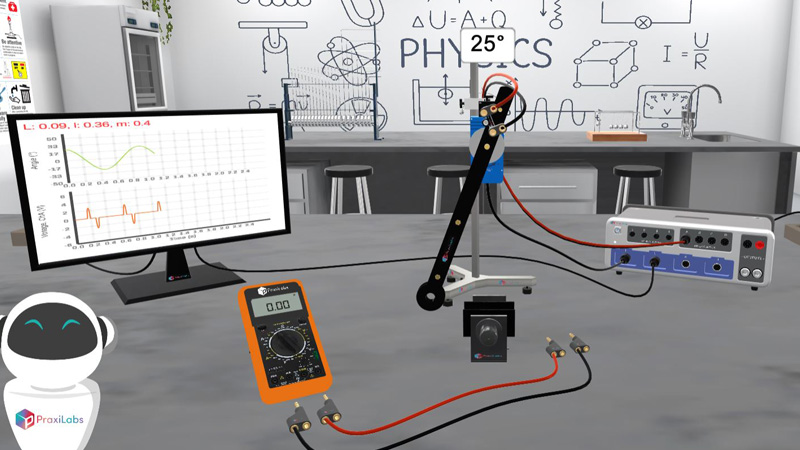





2.5M+
Active Users Worldwide
80%
Improved Learning Retention
60%
Reduction in Laboratory Costs
In Faraday's electromagnetic lab, you will study Faraday's Law of induction using a wand with coil which swings through a magnetic field. In this electromagnetic induction simulation, you will also examine conversion of mechanical energy into electric energy by comparing the energy dissipated in a load resistor to the loss of mechanical energy of the pendulum wand. A rigid pendulum with coil at its end swings through a horseshoe magnet. A resistive load is connected across the coil and the induced voltage is recorded using a Voltage Sensor and the angle is measured with a Rotary Motion Sensor which also acts as a pivot for the pendulum. Graphs of the induced voltage and angle versus time are plotted. The power dissipated in the resistor is calculated from the voltage across the load resistor. The energy converted to thermal energy is determined from the area under the power versus time graph. This energy is compared to the loss of potential energy determined from the amplitude of the pendulum.
By the end of Faraday Law simulation, the student should be able to:
Part I: Magnetic Flux and Faraday's law of induction
Ɛ=-Nddt
Where = B× dA = BA for a magnetic field (B)
Ɛ=-NAdBdt
Part II: Energy conversion for an induction coil swinging in a magnetic field
U=mgh=mgL(1-cos )
∆U=mg(hi-hf)
Where hi=L-Lcosi and hf=L-Lcosf
P=I2R+r=(VR)2(R+r)
Where V is the voltage across the external resistor, V=IR. Thermal energy dissipated in the resistor (R) is given by:
E=P dt = Area under power (P) versus t graph.




